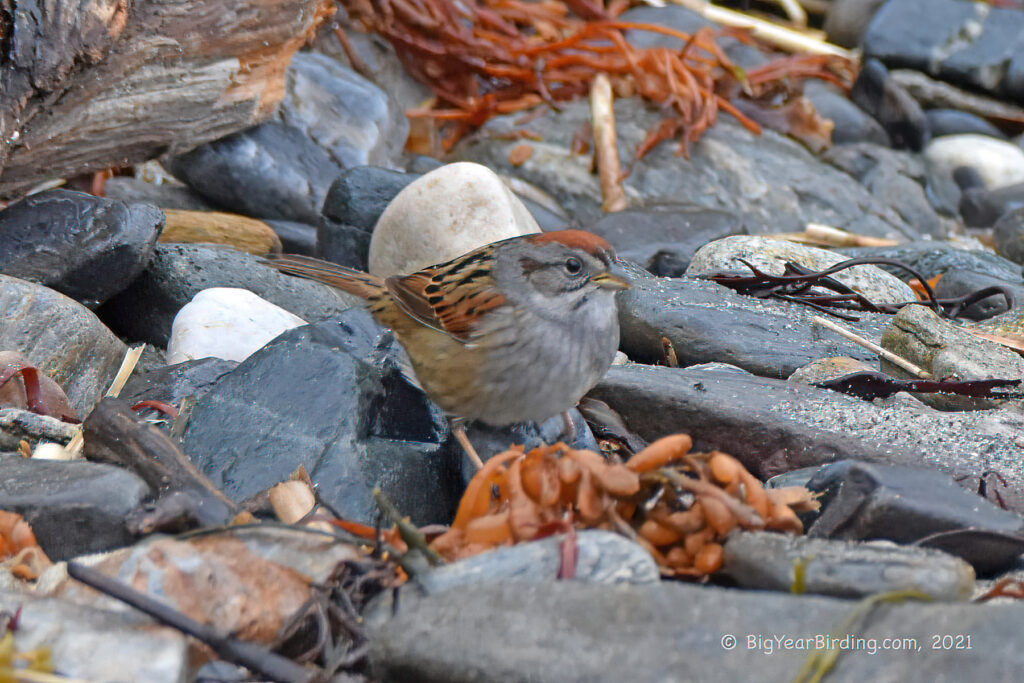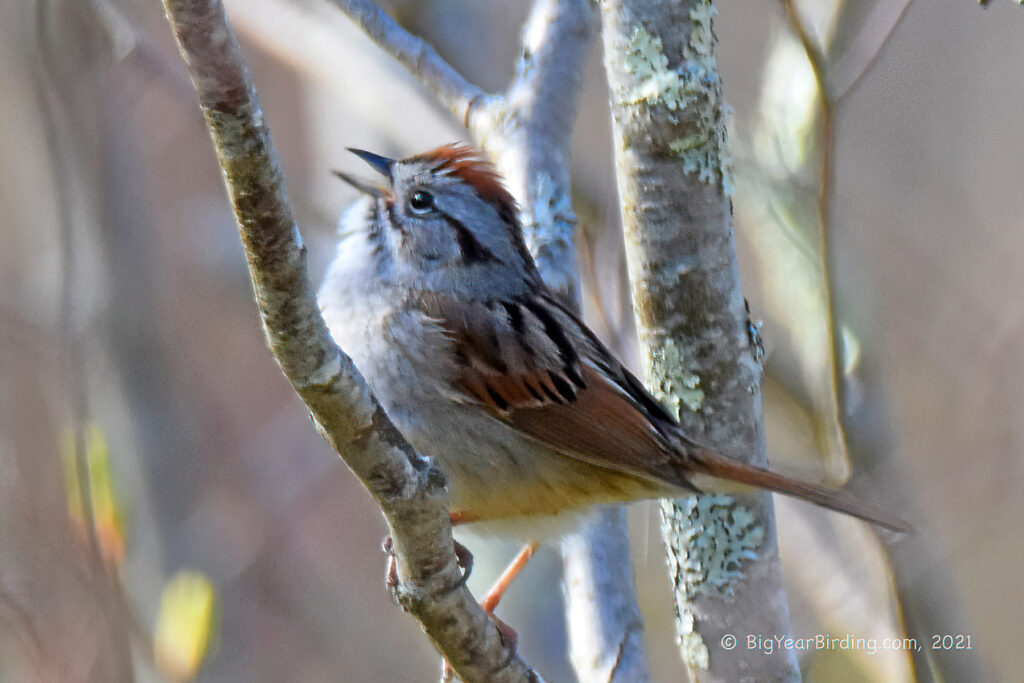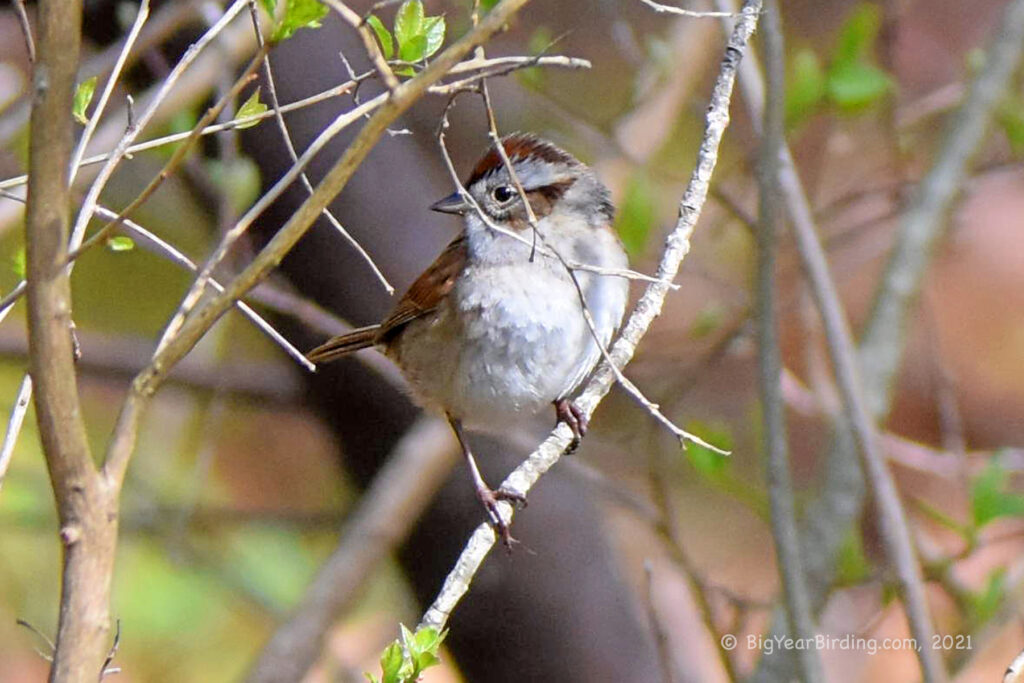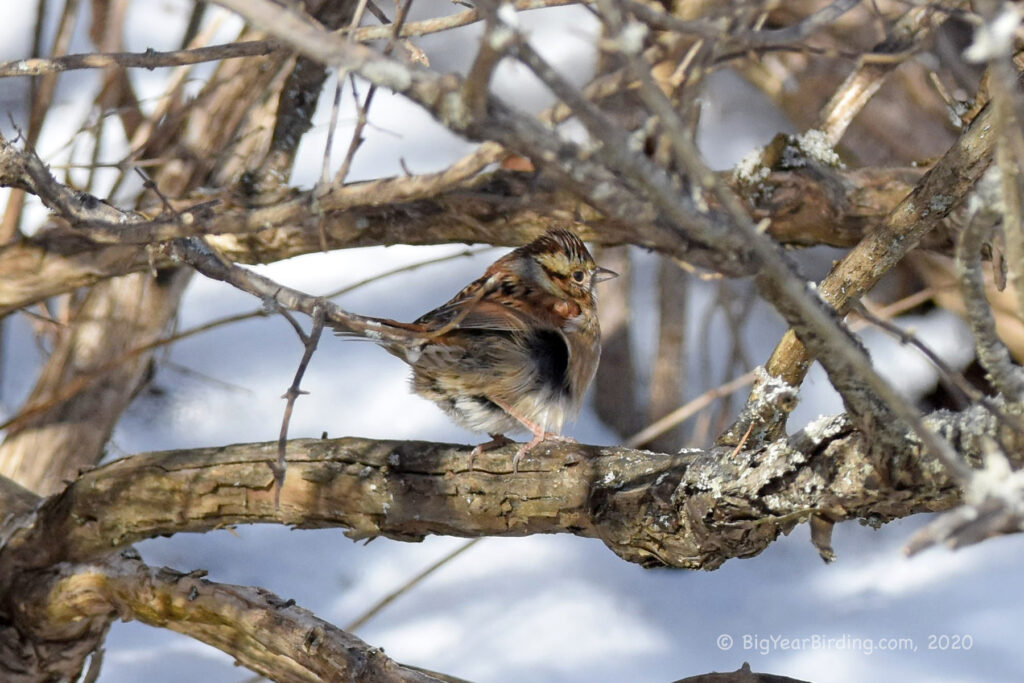
The Swamp Sparrow (Melospiza georgiana) is a small passerine bird that measures around 5.5 to 6 inches in length and weighs approximately 0.5 to 0.6 ounces. The bird has a plump and round body with a short, conical bill that helps it to feed on seeds and insects. Swamp Sparrows have a dark grayish-brown back, rusty-colored wings, and a grayish breast that is streaked with darker markings. The bird’s distinguishing feature is a rusty-colored cap on its head, which contrasts with the grayish-brown color of its face.

Swamp Sparrows are migratory birds that breed in wetland areas across eastern North America during the summer months, and then migrate south to the southern United States and Mexico for the winter. During the breeding season, male Swamp Sparrows defend their territories by singing from prominent perches and engaging in physical displays, such as wing flapping and tail spreading. They are known for their beautiful and complex songs, which consist of trills, buzzes, and musical notes.
In addition to their vocalizations, Swamp Sparrows can be identified by their habitat preference. As their name suggests, they inhabit wetland areas, including swamps, marshes, and bogs, where they can be found in dense vegetation along the water’s edge. During migration, Swamp Sparrows may also be spotted in other wet habitats, such as flooded fields and rice paddies.
Swamp Sparrows are primarily seed eaters, but they also consume insects, spiders, and snails during the breeding season. Their diet may shift towards insects during the winter months when seeds are scarce. The bird’s unique beak allows it to crack open seeds and extract insects from crevices in the vegetation.

While Swamp Sparrows are not considered to be a threatened species, they are vulnerable to habitat loss and degradation caused by human activities, such as urbanization and agriculture. Conservation efforts are focused on preserving and restoring wetland habitats, which are critical for the survival of the species. By maintaining healthy wetland ecosystems, we can ensure that the melodious songs of the Swamp Sparrow continue to be heard for generations to come.

